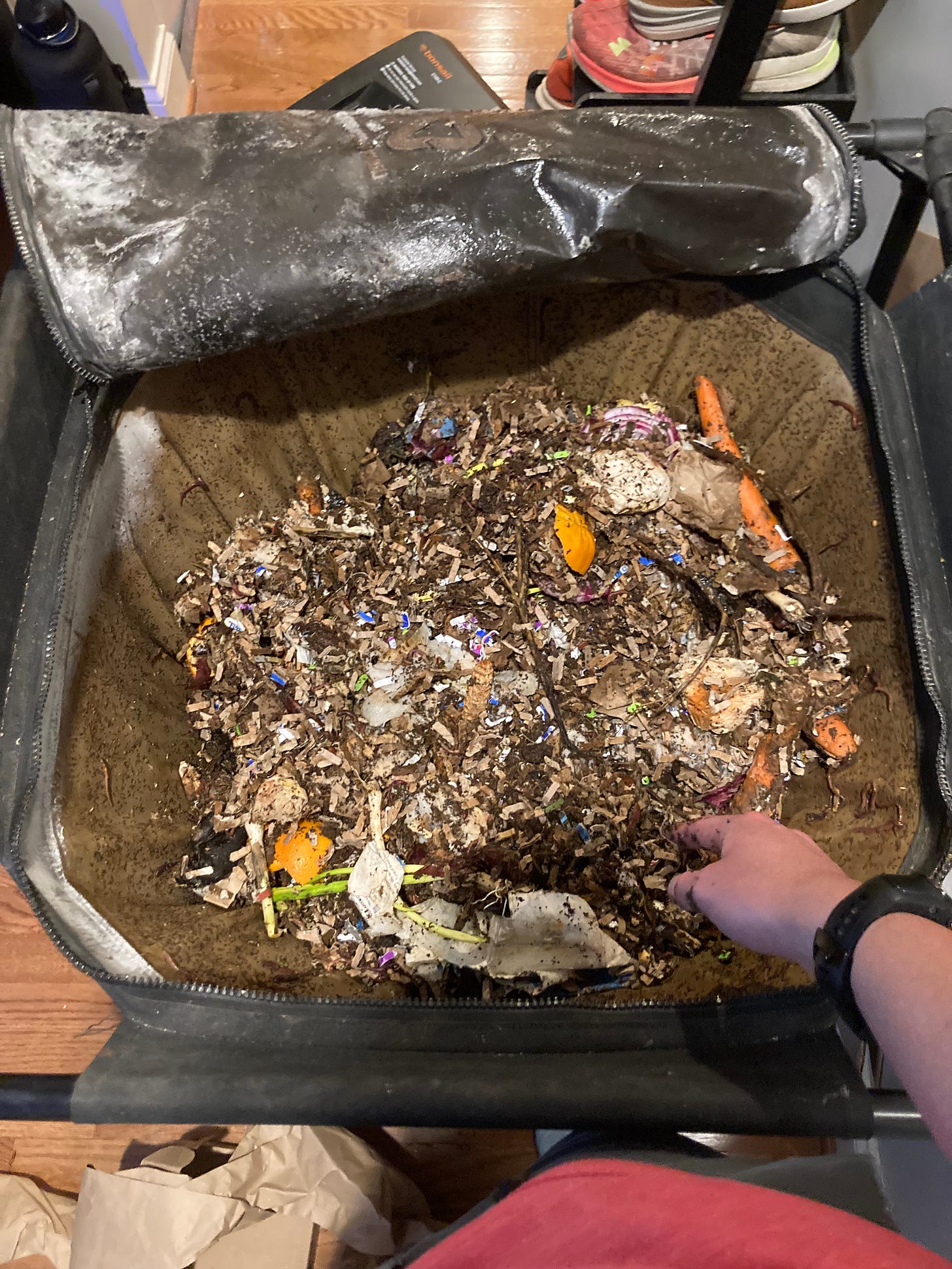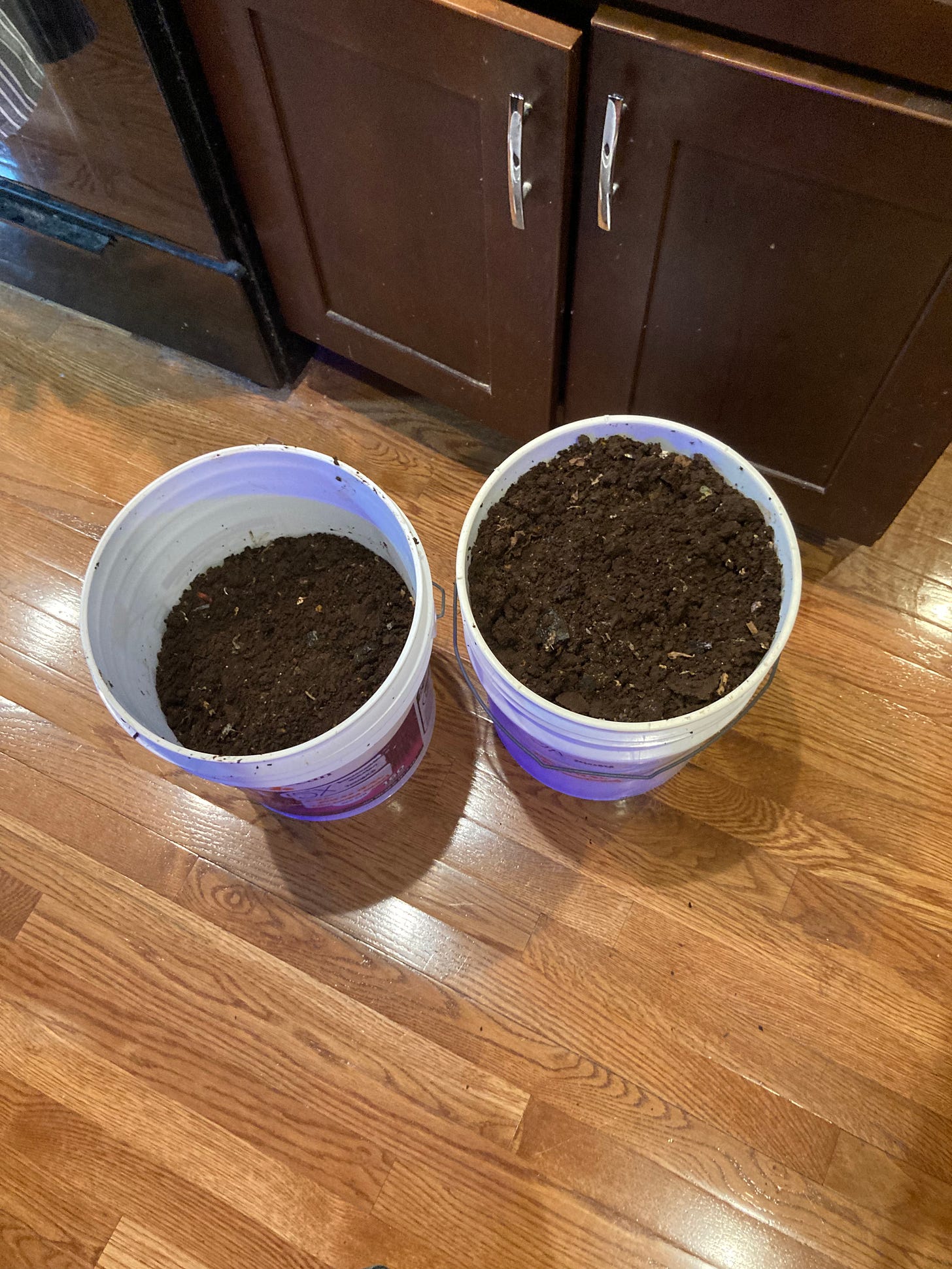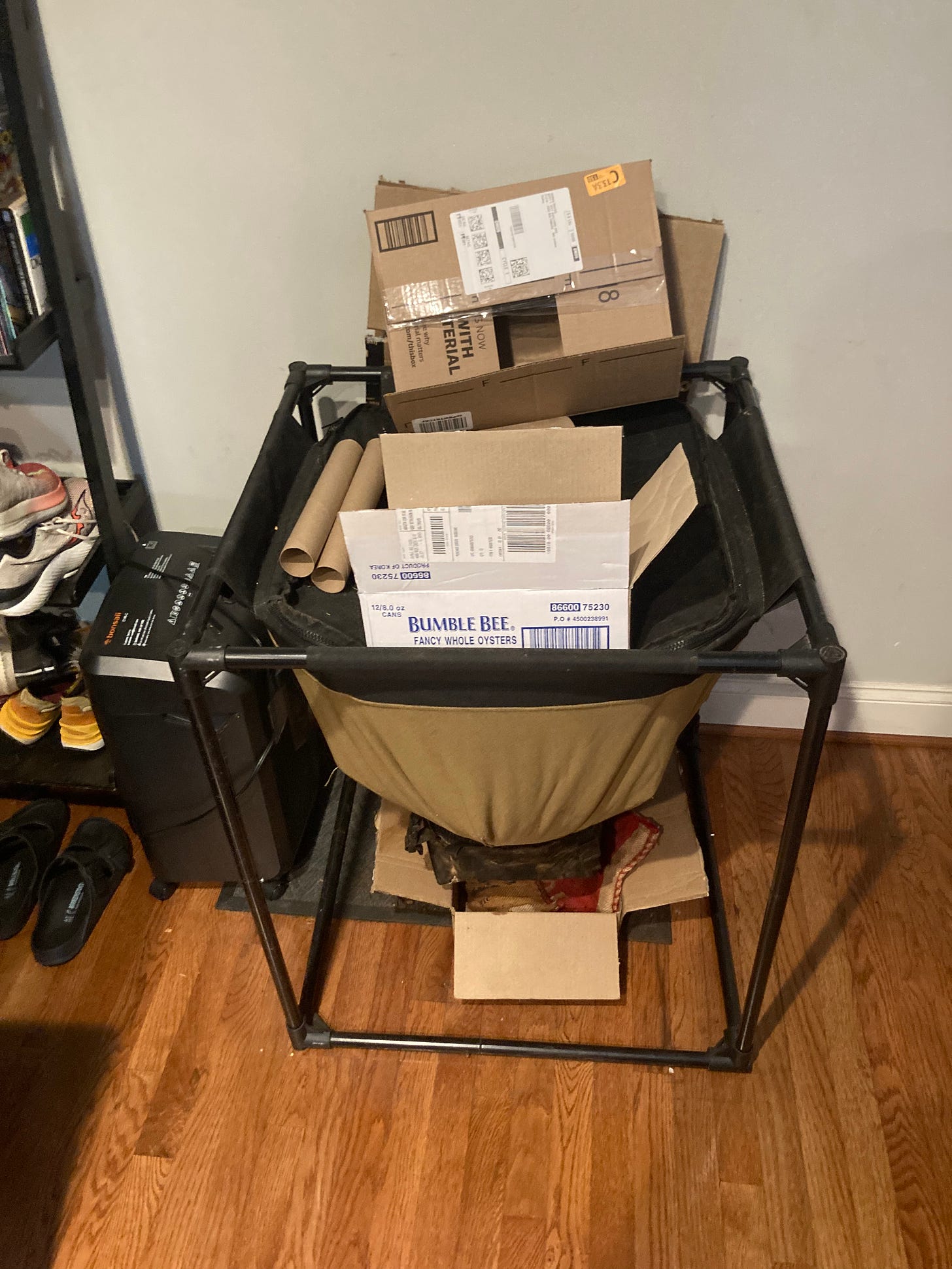Perhaps the defining trait of our modern relationship to the environment is that rather than living off of sustainable flows as our ancestors did, such as using solar energy to grow crops in soil whose nutrients are replenished through applications of human and animal waste, or using hydropower to spin wool or grind grain, we are spending down capital stocks of non-renewable1 resources to power our civilization. The most obvious example is fossil fuels, but practically everything in our society, from mineral ores to timberlands to “Human Resources” is being spent down faster than it can be replenished.
The most worrying of these issues for me is the question of topsoil and the fertility of our farmland in general. Although agriculture only makes up 2% of the GDP of the United States, without any food the other 98% of the economy would all easily fall apart. We seem very far from this today: American agriculture is incredibly productive: we’re a huge net exporter of food and could easily feed ourselves many times over, and that’s with a large part of the population being in ridiculous calorie surplus. Yet all this abundance is incredibly reliant on synthetic fertilizers: nitrogen from the Haber-Bosch process and phosphorus that is mined in places like Nauru (or was). The topsoil of the Great Plains, which was once meters thick, no longer can alone provide enough nutrients for the yields required to support the US population and export market. Part of the reason for this is that synthetic fertilizers provide yields that traditional organic methods cannot2 , but 200-years exporting wheat and beef to New York City and Chicago, where the nitrogen, potassium, and phosphorus in these products ends up in the Atlantic Ocean or the Mississippi River and not back in the midwestern topsoil, is another big factor.
Pre-modern societies that achieved some level of sustainability managed to close this loop between waste (food or human) and production. In Tokugawa Japan, which was perhaps the most successful sustainable premodern society, latrine owners in Tokyo would sell the contents of their enterprises back to farmers in the Kanto region for a hefty sum. In the West we find these kinds of practices to be “ick”, perhaps for somewhat good reason, as there is a significant risk of spreading pathogens via crops fertilized with feces3. As much as I might want to have a composting toilet in my apartment, city regulation, and the disgust of my roommates prevents me from doing so.
However, there are other forms of food waste that we can salvage from waste streams . Uneaten food, unusable vegetable peeling/eggshells/bones, and food packaging can all be disposed of in ways that return nutrients to productive lands, rather than landfills, where they will mix with decaying electronics and heavy metals and be totally unsuitable for feeding us. For those with land, this can be done simply by throwing these things in a big heap outside: they will rot and turn into usable soil eventually. There are ways to speed up this process, bigger piles with proper ratios of nitrogen (from vegetable matter) to carbon (from leaves, stalks, cardboard). If you live in an well-run lefty city (the only ones that come to mind are Boulder, CO and Cambridge, MA), the city will collect your food waste and do this for you. However, since neither of these things are true for me: I live in an apartment, and Baltimore is not a competent leftist city, I decided to turn to a third solution: vermicomposting.
A Vermicomposting Primer
Normal composting relies on bacteria to break down waste into nutrients that can be used by plants. Vermicomposting primarily relies on the same thing, but the process is much faster because of the presence of earthworms, in my case the red wiggler Eisenia fetida. The worms don’t eat the rotting food and cardboard that I feed them per see, they eat the bacteria that are growing on these waste products. In doing so, they keep the bacterial populations in constant exponential growth, and break down the vegetable scraps that they can’t digest into smaller pieces with larger surface area:volume ratios. Since they are motile, they also spread the bacteria that survive the crucible of their digestive system all over the waste storage container. The end result of all this is faster composting with more microbial diversity, as the worms help the compost avoid the normal boom-bust cycles that wipe out many different strains of bacteria.
I keep the worms in ~40 gallon canvas bag in my kitchen made by The Urban Worm Company (see above). I started this worm bin in early 2022 with ~200 worms: the population now is somewhere in the vicinity of 2-4k. This amount of worms can process almost all my kitchen waste (which is significant), as well as cardboard waste from my roommates Amazon use/pizza consumption. The bin produces no odor, and after I started freezing fruit waste, no fruit flies. It easily fits into my small apartment (if I had a basement I would scale up), and only needs to be emptied every 3-6 months. In its lifetime the bin has probably produced around 60 gallons of soil (at Walmart prices that’s over $900 of value from the soil alone: the system has certainly payed for itself). Below I’ll detail how to get started and some FAQs about vermicomposting and worm husbandry in general.
Getting Started with Vermicomposting
Before you even acquire worms, make sure you have approval from the people you share a living space with, and a proper container to store the worms in. A large plastic box can work fine to start out with, but dedicated worm bins, such as the Urban Worm bag, will work better.
Order some worms! I am happy to ship you a couple hundred worms (for a fee, DM me), but I got mine from Uncle Jim’s worm farm. You want to start out with red wigglers, but other earthworm varieties, such as European nightcrawlers can also work. For the most successful bins, you will want both species, as they both take up slightly different niches, and will thus process waste more efficiently than a single worm species alone.
Around a week before the worms are supposed to arrive begin preparing their bedding/first meal. I would recommend mixing 1 lb shredded cardboard with around the same weight in veggie scraps in one corner of the bin. If you want to minimize the chance of fruit flies outbreaks freeze all your scraps first.
Mix in the worms as soon as they arrive. For the first few weeks, some may try to escape: just return them to the bin and add some extra shredded cardboard. More often than not the problem with early bins is too many veggie scraps and thus too much moisture.
Feed the worms equal proportions cardboard and veggie scraps approximately every two weeks. If you have a larger bin you can place these bulk feeds in different corners of the bin each time: this way the worms will be able to avoid foods they don’t like.
Approximately every three months you’ll need to empty finished compost out of the bin. When you’re first getting started this may take a little longer as the worm population at the beginning is significantly smaller than that in a mature bin. If you have a continuous flow system this is as easy as opening the other end of the bin and drawing out soil until you see worms. In simpler systems you’ll have to sieve off completed compost by hand.
FAQs
Why even bother with this? Isn’t food waste such a small total of total waste production/energy consumption?
In terms of overall carbon footprint, reducing food waste indeed isn’t very impactful. However, I still think it’s important preparation for a future in which we don’t have central waste disposal (and you will have to dispose of your urine and/or feces safely) and for a future that is more reliant on organic farming, which almost by definition requires compost.
How much space does your bin take up?
The bin I have is 2.5*2.5*3 feet approximately. But you can start vermicomposting in very small bins: even a 12 in* 6 in *4 in plastic tub would work. Larger bins can process more scraps more quickly.
How much do you feed your worms?
This varies a lot, but I generally feed my worms about 4 pounds of veggie scraps (frozen, usually banana peals) mixed with the same volume of shredded cardboard, usually from shipping boxes
What do you feed your worms?
Pretty much anything that I would eat. People say they don’t like citrus waste, but I don’t find this to be true. Their favorite foods seem to be avocado and salad leaves. It is really important to add large amounts of shredded cardboard: the worms do much much better when the carbon/nitrogen ratios are more balanced. Worms also need some amount of grit to help with digestion: crushed oyster shells, coffee grounds, and eggshells all help with this.
Where did you get your worms from?
Uncle Jim’s Worm Farm. Urban worm company also sells these and you can look on eBay as well. Shoot me an email if you’d like to buy some from me.
How often do you empty the bin and what do you do with all the soil?
I generally empty the bin every three months. The most recent bin empty was perhaps 6 months overdue, and I got 10 gallons of soil out of it. I usually use this for my porch plants, but I have donated soil to my friends who have actual gardens.
Does it smell or attract vermin?
Early on the bin lifetime we had a little bit of trouble with cockroaches and fruit flies. The former was solved by not adding outside leaf litter to the bin, the later by freezing all the veggie scraps that end up in the bin. Most fruit is littered with fruit fly eggs which can be killed by freezing temperatures.
As long as you keep the amount of rotting matter in the bin to a minimum (only feed amounts to the worms that they can process relatively quickly), there will be no odor or vermin issues. Remember, cardboard/paper is your friend.
I blog about language learning, biology, the science and art of learning, and many other things. If you feel inclined, please subscribe or consider buying me a coffee.
Josh
Non-renewable is a bit of a misnomer here. Oil is renewable, just not on timescales relevant to human civilization. Same with ore deposits and topsoil.
This is heavily debated, and some say it is possible to get much higher yields with more labor intensive practices such as intercropping, or no-till like is practiced in One Straw Revolution.
Although urine is sterile when it comes out of the urinary tract and can be used safely without any kind of treatment if it is applied to plants immediately.






